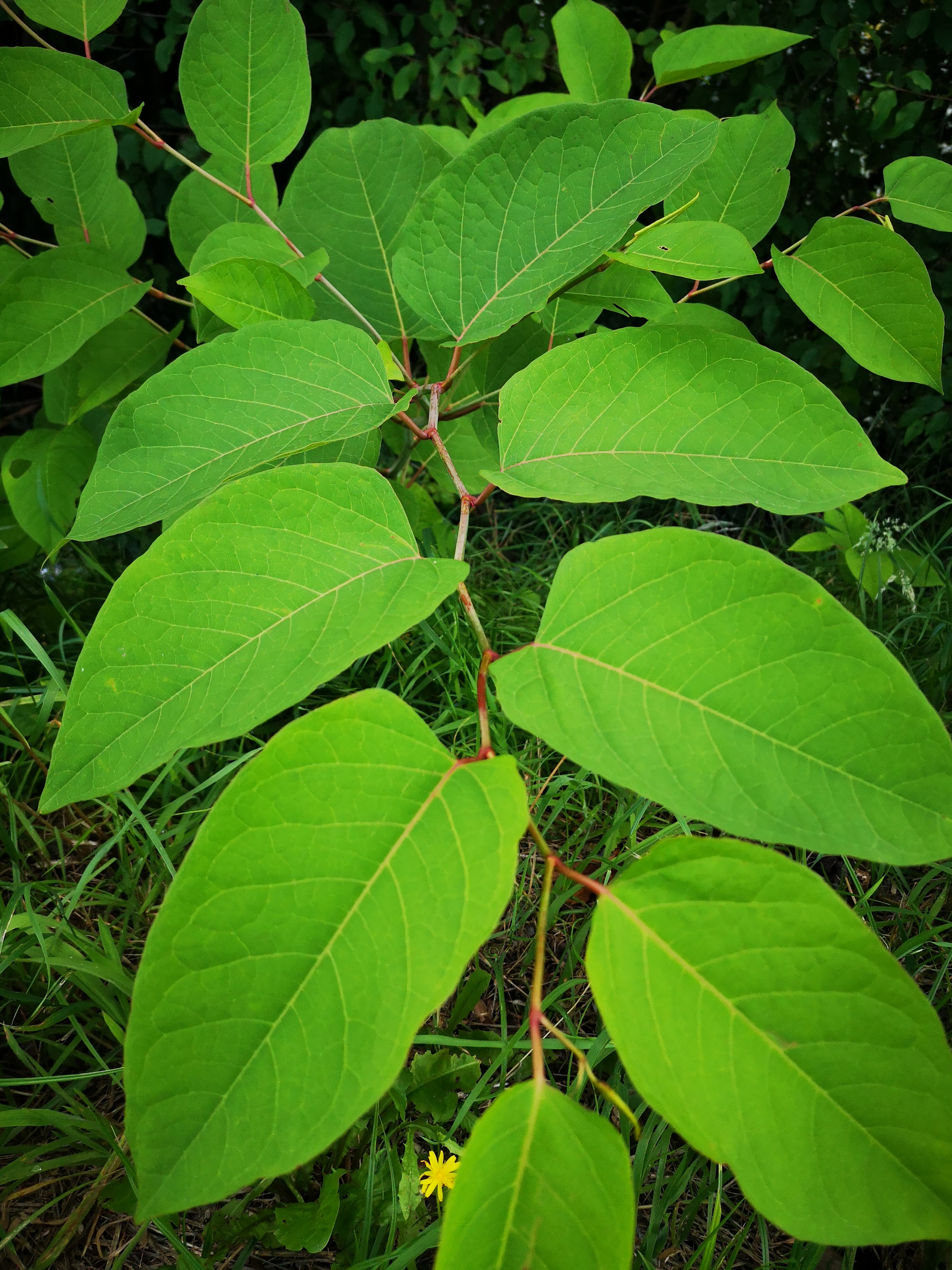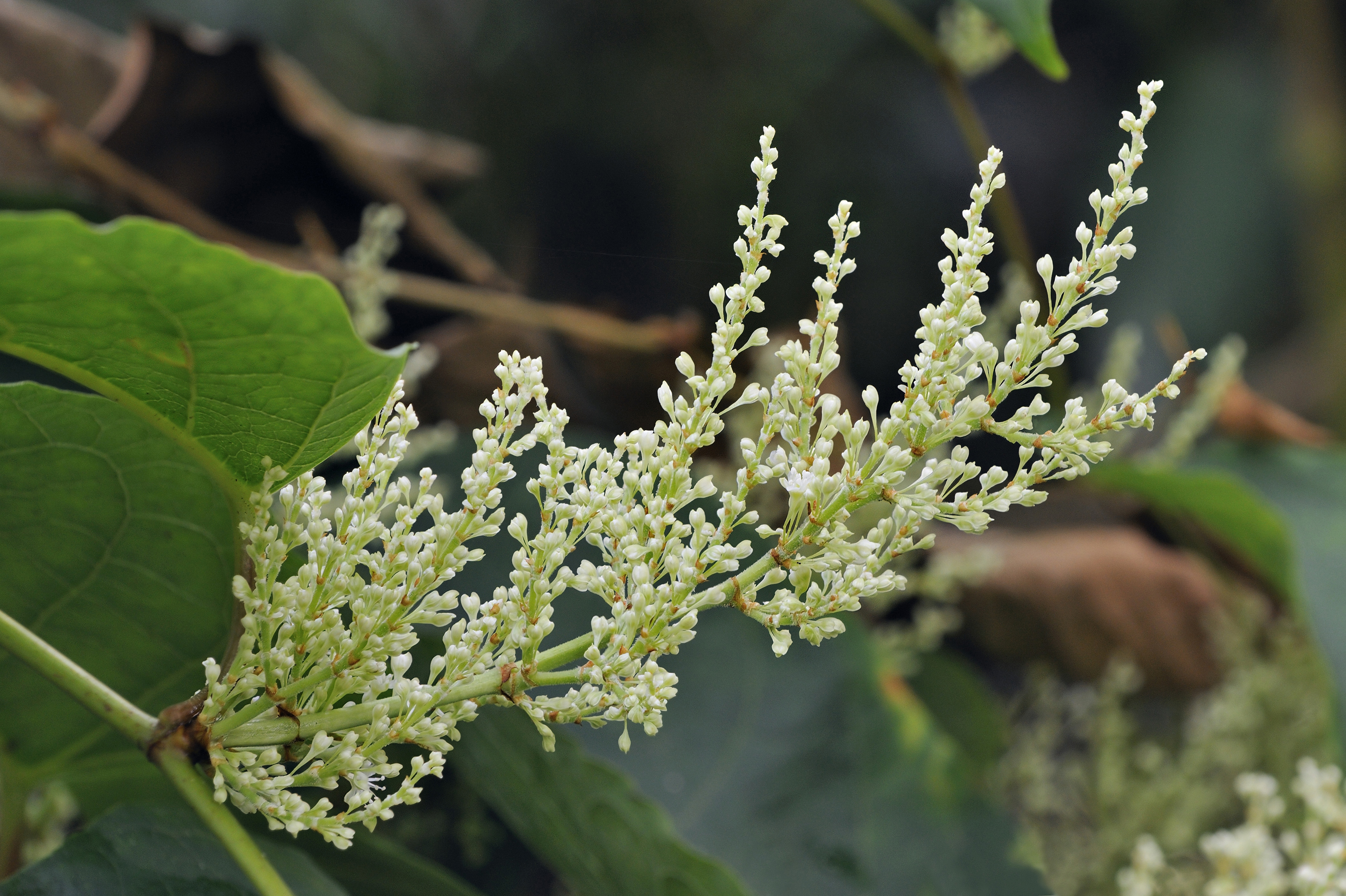Sava TIES - GET TO KNOW THE INVASIVE ALIEN PLANTS - Knotweeds
18-03-2021
Knotweeds are perennial herbaceous plants with strong rhizome. From these rhizomes develop shoots which can be over 3 m high and about 4 cm thick. The stems are erect, hollow and without leaves at the bottom. Their leaves are large, broad and elongated oval. The flowers are arranged in 8 to 12 cm long panicles. A single plant can have 200,000 flowers. Knotweeds' roots penetrate 1 to 2 m in depth and spread far in width. This is a common description of several taxa from the knotweed group that are remarkably similar, and on which we use very similar removal methods. These are primarily the Japanese knotweed (Reynoutria japonica Houtt.), giant knotwed (Reynoutria sachalinensis (F. S. Petrop.) Nakai and T. Mori) and their spontaneous and fertile hybrid Bohemian knotweed (Reynoutria x bohemica Chrtek et Chrtková). The giant knotweed grows up to 5 m in height. They origin from East Asia.

Knotweeds (Photo: I. Sučić, Zeleni prsten Public Institution of Zagreb County)
The Japanese knotweed was introduced to Europe during the 19th century as an ornamental plant. It is assumed that only one plant was introduced into Europe and it later, using vegetative propagation, spread to many European countries. It occupies grasslands, wet and periodically flooded areas, the banks of streams and stagnant waters, the edges of clearings and roads, urban areas. They thrive very well in areas where nitrogen-rich fertilizers have been used. They cause a whole range of damage to the economy as they reduce the accessibility of the area, flood runoff, increase the cost of watercourse maintenance, damage infrastructure (e.g. roots penetrate through roads) etc.

Photo: Martin Fowler/Shutterstock.com
Impacts on living beings:
Allelopathy – they release substances into the soil that prevent the growth of other plants, and which affect the microorganisms that live in the soil and thus indirectly cause the extinction of some native species.
Competition – since they start germinating early and grow very quickly, they overshadow other plants and utilize nutrients from the soil faster and better, which over time leads to almost total prevention of germination and growth of all other plant species.
Herbivores – it was recorded that in Great Britain, sheep, cows, goats, horses and donkeys fed on the above-ground parts of the knotweed.
Negative impacts on biodiversity:
They form almost homogeneous stands in which some other species rarely appear. They strongly prevent the natural process of healing and renewal, i.e. natural afforestation and reduce the diversity of other plants, and thus animals. They create the biggest problems in habitats near water.

Photo: Manfred Ruckszio/Shutterstock.com
How to remove them?
When it comes to complete removal, plants of this genus are among the most challenging invasive alien species. Removal can be performed mechanically and by applying herbicides. Mechanical methods are mowing, grazing livestock and digging up the plant for 5 years along with the rootstock. Methods of application of herbicides include spraying, coating, injection or a combination of these methods, but they must not be applied near water habitats and in protected areas. The removal of only the above-ground parts of the plant does not give any results. On the contrary, it causes the outbreak of even more plants. The underground stem (rootstock) together with the root is the main problem because they store a large amount of energy and without removing the rhizome there is no chance of removing the knotweed from an area.
Did you know?
In humid conditions, a piece of root or stem that is only 1 cm in size can grow into a new plant.
News in national languages:
Croatia - Zeleni prsten Public Institution of Zagreb County or Lonjsko Polje Nature Park Public Institution
Slovenia - Public Institution Ljubljansko barje Nature Park
Bosnia and Herzegovina - Center for Environment or Public Company National Park "Una"
Serbia - Institute for Nature Conservation of Vojvodina Province or Nature Conservation Movement Sremska Mitrovica or Public Enterprise „Vojvodinašume“
Germany - EuroNatur
